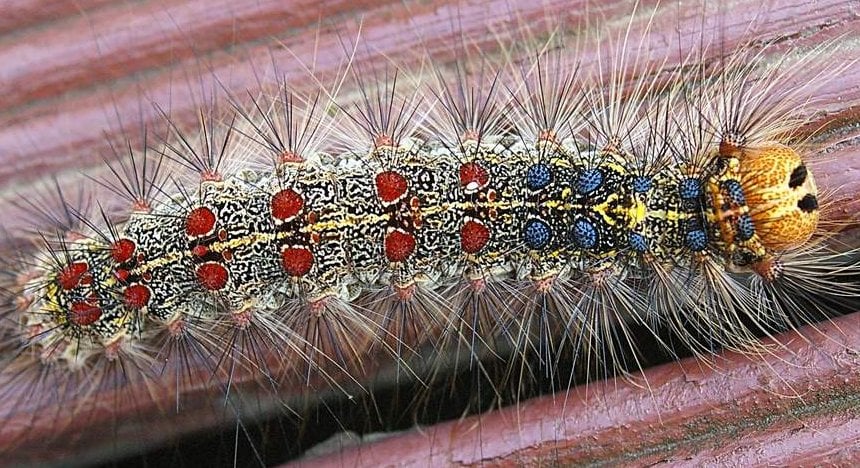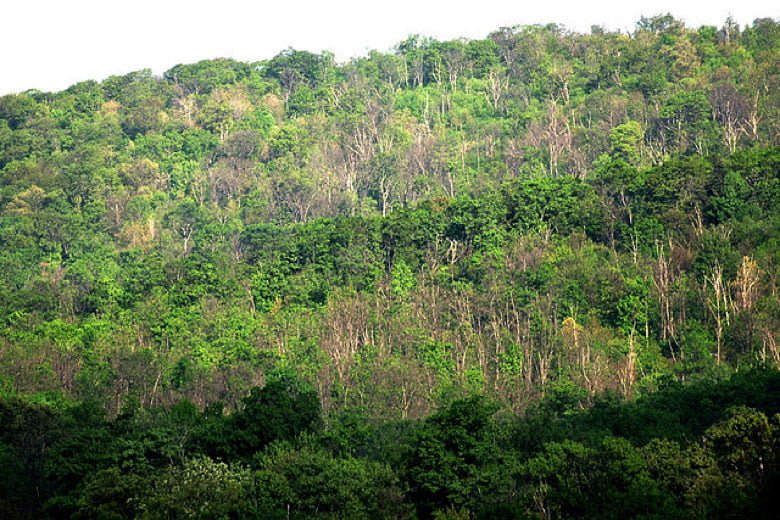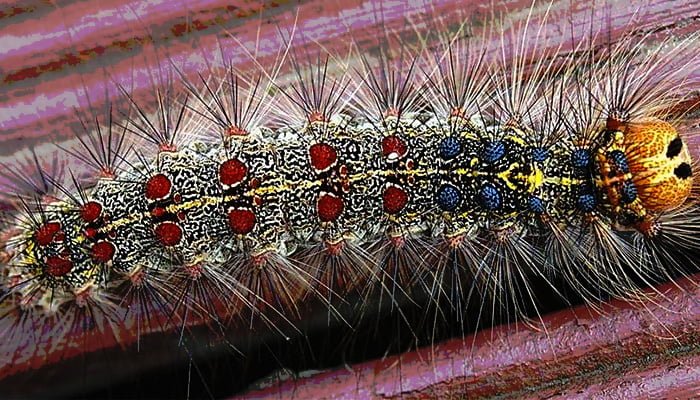As with many invasive species, the Gypsy Moth was accidentally introduced into Massachusetts in 1869. Years later in the early 1900’s, the Gypsy Moth had become widespread into New England states, eastern NY and the regions of NJ.
 Each year in June, we receive a flooding of calls from clients with Gypsy Moth infestations. Currently, the moth is in its caterpillar stage. As a caterpillar, this pest is producing damaging results to many local trees by eating them. Visible damages to your leaves and trees, as well as the presence of excrement, are signs that the Gypsy Moth caterpillar may be chewing on your trees (oak trees are their favorite meal). Many of our clients have even expressed that they can actually hear the caterpillars chewing.
Each year in June, we receive a flooding of calls from clients with Gypsy Moth infestations. Currently, the moth is in its caterpillar stage. As a caterpillar, this pest is producing damaging results to many local trees by eating them. Visible damages to your leaves and trees, as well as the presence of excrement, are signs that the Gypsy Moth caterpillar may be chewing on your trees (oak trees are their favorite meal). Many of our clients have even expressed that they can actually hear the caterpillars chewing.
During the month of July, the caterpillars reach their pupa stage, allowing them to develop into the full growth state as a Gypsy Moth. Once a gypsy moth caterpillar reaches its adult phase, they mate leaving anywhere from 75-1,000 eggs behind, contributing to the continued spread of their invasive species.
Treating the damages that the caterpillars have already done, as well as remaining proactive in prevention, is key in maintaining the health of your trees.

Prevention & Management:
- At Red Cedar, we use the most organic and non-toxic insect management and control applications.
- A proactive insect prevention health care plan can help to manage such pests before they become an infestation.
- Depending on the damage that has been done by the Gypsy Moth, we can likely construct a health care plan to nurse your tree back to health.
If you are hearing, or seeing signs of the Gypsy Moth Caterpillar on your trees, contact Red Cedar today! We can treat your tree to help eliminate these pests, as well as provide a plan for the future of your tree so it can continue to thrive!


